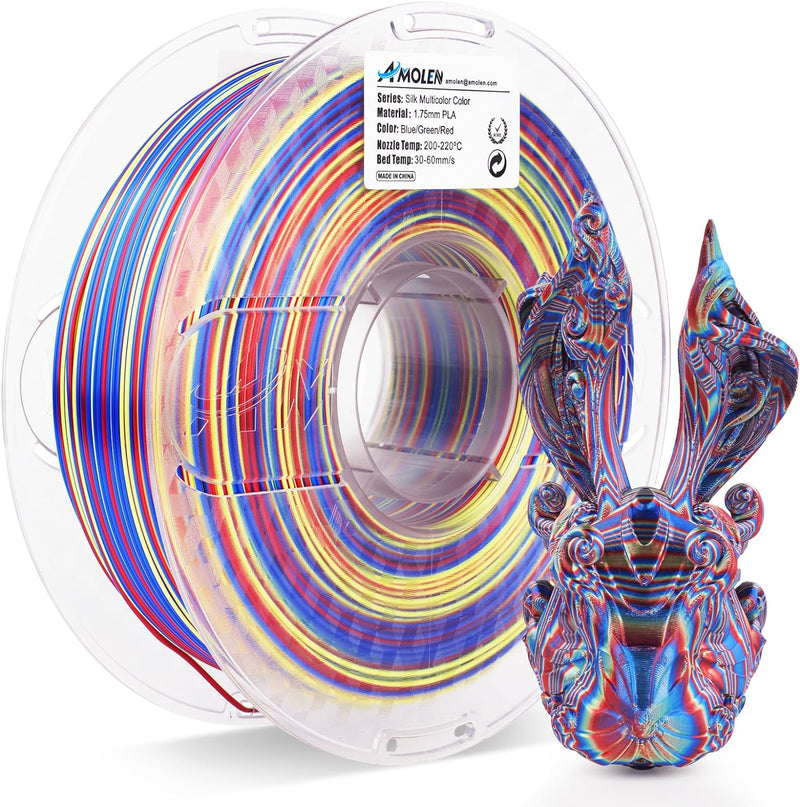Unlock the Secrets of 3D Printing: Find Your Perfect Filament Match!
3D printing has revolutionized the way we think about manufacturing, prototyping, and even art. At the heart of this technology lies one crucial element: the filament. The filament you choose can significantly impact the quality, durability, and aesthetics of your printed object. With a myriad of options available, understanding how to select the right filament for 3D printing for your specific needs is essential for achieving successful results.

From biodegradable materials to highly durable plastics, the variety of filaments can cater to a wide range of projects. Each filament type possesses unique characteristics that can enhance or hinder your printing experience. Whether you're a hobbyist looking to create a fun model or a professional aiming to produce functional prototypes, knowing the different types of filaments is vital to your success.
Understanding 3D Printing Filaments
3D printing filaments are the materials used in the additive manufacturing process to create 3D objects. These thermoplastic materials are heated and extruded through a nozzle to form layers that build up a three-dimensional model. The choice of filament is not merely a matter of preference; it affects everything from layer adhesion and print resolution to strength and flexibility of the final product.
Choosing the right filament is crucial for different projects, as each material offers distinct mechanical properties and printability. For instance, a filament that is great for aesthetic prints may not be suitable for functional parts that require high durability. In my circle of 3D printing enthusiasts, I've seen firsthand how the wrong filament choice can lead to print failures, frustrating beginners and experienced users alike.
Types of 3D Printing Filaments
There are several types of filaments widely used in 3D printing, each with its own set of properties and best-use cases. Here is a closer look at the most common types:
PLA (Polylactic Acid)
PLA is one of the most popular filaments for 3D printing, known for its ease of use and biodegradable nature. It's made from renewable resources, such as corn starch or sugarcane, making it environmentally friendly. PLA is ideal for beginners due to its low warping and minimal odor during printing. It's perfect for creating detailed models, toys, and prototypes. However, it has lower heat resistance and durability compared to other materials, so it's not suitable for functional parts exposed to high temperatures.
ABS (Acrylonitrile Butadiene Styrene)
ABS is a robust and durable filament commonly used for functional parts and prototypes. It has higher heat resistance than PLA and can be easily sanded and painted, making it ideal for creating automotive parts or household items. However, ABS is more challenging to print due to its tendency to warp and emit fumes during the printing process. Proper ventilation and a heated bed are recommended when using ABS to achieve the best results.
PETG (Polyethylene Terephthalate Glycol)
PETG is a versatile filament that combines the best of both PLA and ABS. It offers excellent strength, flexibility, and durability, making it suitable for a wide range of applications. PETG is also resistant to moisture and chemicals, which is why it's often used for functional prototypes and containers. Its ease of printing and low warping make it an attractive option for many 3D printing projects.
Nylon
Nylon filaments are known for their exceptional strength, flexibility, and durability. They are commonly used in applications requiring tough and resilient parts, such as gears, tools, and functional prototypes. However, nylon can be tricky to print due to its high moisture absorption and tendency to warp. It requires a specific printing environment and settings to achieve optimal results, which can be a hurdle for beginners.
Choosing the Right Filament for Your Project
When selecting a filament, it's essential to consider various factors that align with your project's needs. First, evaluate the purpose of your print. Are you creating a decorative model, or do you need a functional part? Next, consider the properties required for your project. Strength, flexibility, durability, and heat resistance are critical attributes that can dictate your choice of filament.
Additionally, think about the printing conditions. Some filaments require specific temperatures and settings, while others are more forgiving. For instance, if you're working in a home environment without a heated bed, PLA may be the best choice for its ease of use. On the other hand, if you're looking for something more durable, ABS or PETG could be more suitable, provided you have the right setup. Experimenting with different filaments can help you discover which works best for your unique needs, just like my friend who found success after switching from PLA to PETG for her functional prototypes.
Choosing Your Ideal 3D Printing Filament
In conclusion, the filament you choose for 3D printing plays a significant role in the success of your projects. Understanding the various types of filaments available and their unique properties can help you make informed decisions tailored to your specific needs. Whether you’re aiming for aesthetic beauty or functional strength, there’s a filament out there that will match your vision.
So don’t hesitate to experiment with different materials to find your perfect filament match. The world of 3D printing is as vast as your imagination, and the right filament can unlock incredible possibilities for your creations.







